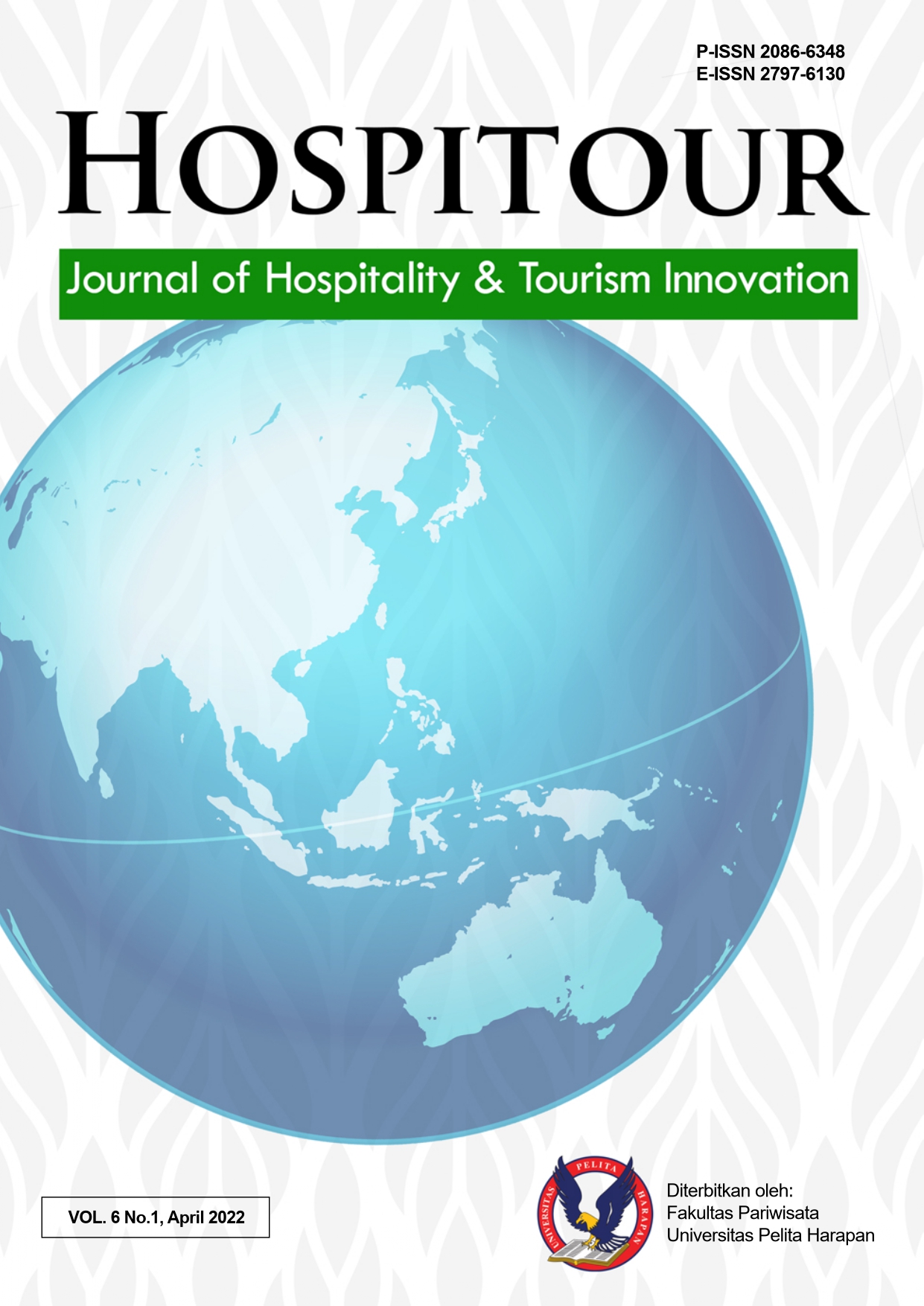IMPLEMENTASI PENDIDIKAN TERBUKA DAN JARAK JAUH (PTJJ) BERDASARKAN COMMON ASEAN TOURISM CURRICULUM (CATC) UNTUK UNIT KOMPETENSI PREPARE AND SUBMIT QUOTATION
Kata Kunci:
CATC, open and distance education, tour operation, prepare and submit quotationAbstrak
One of the fields of work that will be developed for open and distance education is tour operation. In tour operations, one of the competency units in tour operations in preparing and submitting quotations. The Common ASEAN Tourism Curriculum (CATC) has formulated a toolbox for the preparation and submit quotation competency units and defined four elements in the competency unit, however, a distance open learning development test has never been conducted for the toolbox, for this reason, the research was conducted. The aims of this study are to (1) explain the implementation of the prepare and submit quotation competency units in open and distance education; and (2) provide open and distance education from the competency unit prepare and submit quotations that can be used by universities and stakeholders in the ASEAN region. This research design is qualitative. Informants were selected using the purposive sampling method, namely 12 students. Data collection was carried out by semi-structured interviews. The data analysis technique used in this research is interactive analysis. The results show that the implementation of the prepare and submit quotation competency unit in open and long-distance education has gone through a model development process. The model has gone through the trial phase and the results show a positive response so that the competency unit for preparing and submitting quotations can already be used by universities and stakeholders.
Referensi
Buselic, M. (2012). Distance Learning - concepts and contribution, Oeconomica Jadertina, 1 (2012).
Casarotti, M., Filliponi, L., Pieti, L., & Sartori, R. (2002). Educational interaction in distance learning: Analysis of one-way video and two-way audio systemEducational interaction in distance learning: Analysis of one-way video and two-way audio system. PsychNology Journal, 1(1), 28-38.
Gunagama, M. G., Naurah, Y. R., & Prabono, A. E. P. (2020). Pariwisata pascapandemi: Pelajaran penting dan prospek pengembangan. LOSARI: Jurnal Arsitektur Kota Dan Pemukiman, 5(2), 56-68. https://doi.org/10.33096/losari.v5i2.76
Hrastinski, S. (2008). Asynchronous and synchronous e-learning. Educause quarterly, 31(4), 51-55.
Miarso, Y. (2004). Menyemai benih teknologi pendidikan. Kencana.
Miles, M. B., & Huberman, A. M. (1984). Qualitative Data Analysis A Sourcebook of New Methods. Sage Publications.
Nesbit, Belfer, & Leacock. (2004). Learning Object Review Instrument (LORI) User Manual.
Prasetya, A. W. (2021, April 4). Tren wisata pascapandemi, desa wisata diyakini jadi pandemic winner. Kompas.Com. https://travel.kompas.com/read/2021/04/03/080800027/ tren-wisata-pascapandemi-desa-wisata-diyakini-jadi-pandemic-winner?page=all
Sugiyono. (2018). Metode penelitian kuantitatif, kualitatif dan R&D. Alfabeta.
Suprihatin, W. (2020). Analisis perilaku konsumen wisatawan era pandemi Covid-19 (studi kasus pariwisata di Nusa Tenggara Barat). Jurnal Bestari, 1(1), 56-66.
Wibawanto, H. (2017, September 11). Instrumen evaluasi kualitas pembelajaran daring dalam SPADA Indonesia. Semiloka Pembelajaran Daring Di Perguruan Tinggi.
Unduhan
Diterbitkan
Terbitan
Bagian
Lisensi
Authors who publish with this journal agree to the following terms:
1) Authors retain copyright and grant the journal right of first publication with the work simultaneously licensed under a Creative Commons Attribution License (CC-BY-SA 4.0) that allows others to share the work with an acknowledgement of the work's authorship and initial publication in this journal.
2) Authors are able to enter into separate, additional contractual arrangements for the non-exclusive distribution of the journal's published version of the work (e.g., post it to an institutional repository or publish it in a book), with an acknowledgement of its initial publication in this journal.
3) Authors are permitted and encouraged to post their work online (e.g., in institutional repositories or on their website). The final published PDF should be used and bibliographic details that credit the publication in this journal should be included.

